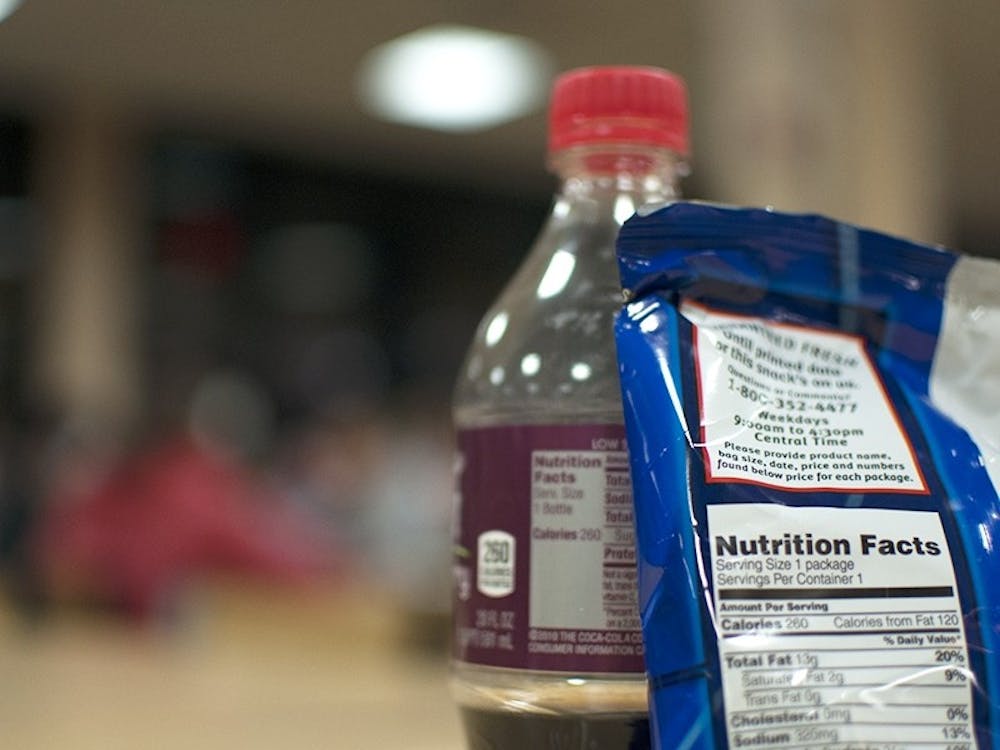Moore: Eliminating serving size confusion may help people make healthier decisions
Making healthy eating choices isn’t always easy, especially for many college students whose diets rely on pre-packaged snacks and meals.
A new study published last week by the U.S. Food and Drug Administration found that food nutrition labels can be confusing for consumers, and a USC professor says that proposed changes to FDA food labeling guidelines could possibly help people make better food assessments and healthier dietary decisions.
The FDA study, published in the February edition of the Journal of the Academy of Nutrition and Dietetics, concluded that a clear display of the calories and nutrients found in an entire pack of food made it easier for people to assess the nutritional value of products.
The study suggests making containers only hold one serving or changing labeling to use a dual-column package label that displays both single-serving and whole package nutrition information. The study concluded that both options result in easier consumer understanding of items’ nutritional value.
USC exercise science department head Dr. Teresa Moore agrees with the considered changes — to an extent.
“I think it’s confusing to the consumer,” Moore said. “I think a lot of people look at just the total calories, and they don’t really go past that and look at the smaller print above that to see the actual size of the serving.”
The current food labels are accurate, Moore said, but the information could be presented more clearly to consumers to reduce the amount of effort put into assessing the nutritional value of their food.
Even with changes, though, Moore said it is up to consumers to make healthy choices about what they put in their bodies.
“A bag of chips is still a bag of chips; it’s not going to change,” Moore said. “People may be more aware of the calories they’re putting in their bodies, but they still have to make the choice to take in less.”
The main benefit of the proposed changes to nutrition labels would be to eliminate the effort of self-education about food labels that many consumers are not going to put in anyway, Moore said.
“It would make it a lot easier for people just to glance at the package and know what’s in there, because right now it takes a lot of time to go in and read every single label on every food product that you purchase,” Moore said. “Not everybody’s going to do that. We have to make things a lot clearer.”
But Moore said she wishes the FDA would look beyond serving size information in its considered changes to food labels. She would like to see clearer presentation of information about the percentage of nutrient content within food items, and she said the “percent daily value” information on labels is also confusing to many consumers.
However, she noted that nutritional labels mean very little to students who rely on prepared meals in restaurants and dining halls. She encouraged students to seek healthy food options in all cases, whether packaged or prepared meals.
“The more a student asks for the healthy option, the more students want healthier foods, that’s what the dining halls will be providing,” Moore said. “You know, we vote with our pocketbooks.”

